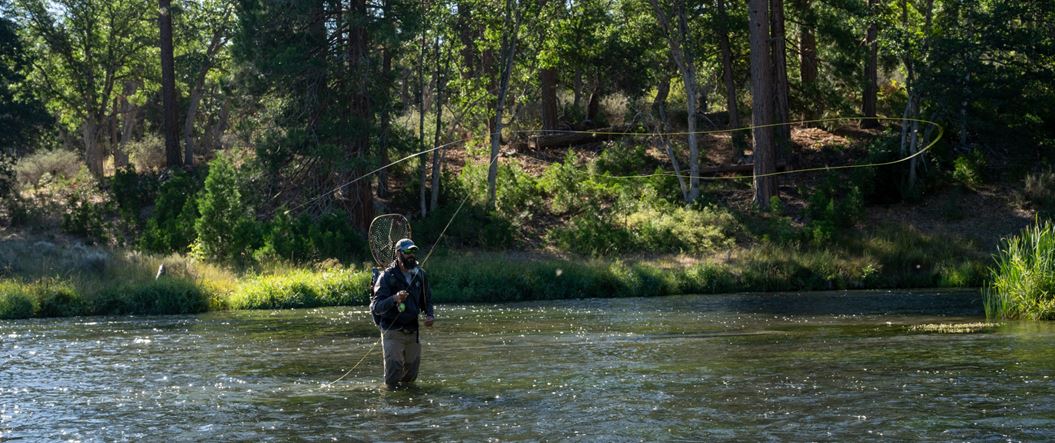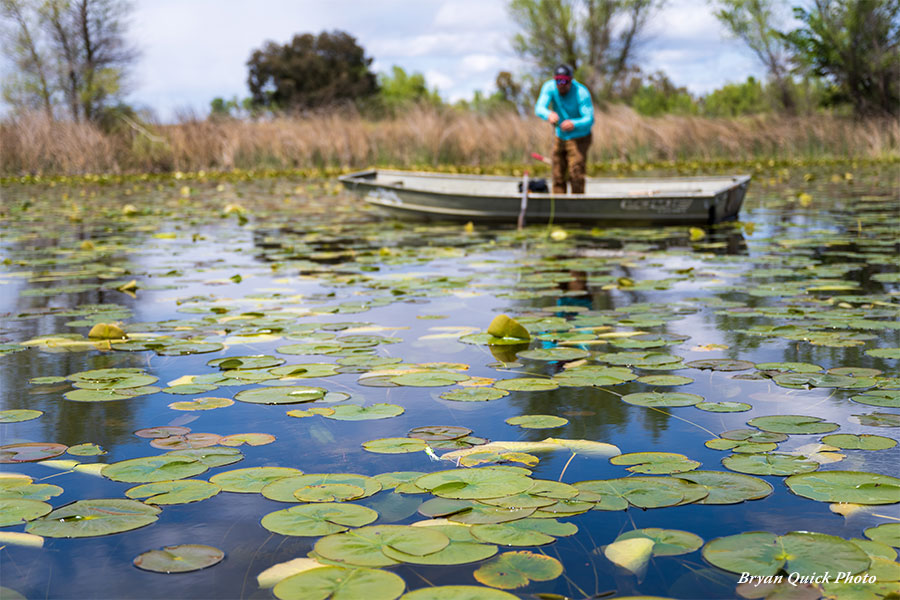We’ve had a few good shots of rain that swelled everything and blew out all of the rivers. Fortunately everything calmed down and dropped into good shape. As we are looking at another storm on the horizon, we wonder what this spring will bring. It can go either of two ways depending upon how cold and wet this winter is, and with a La Ni`na forecast we typically are clipped by a lot of cold, wet storms piling onto areas north of us. We hope they do bring us lots of rain, and we have seen a lot of promising winters turn out to be a dud. In just the past few winters we’ve seen record snows, waves of warm storms that filled our reservoirs, and drought. But, this is Northern California, and fishing-wise we’ll have options either way!
So while you are dreaming of warming, lengthening days, and blizzard Mayfly hatches, we’ll preview what you can expect in each of our storied watersheds for any of these circumstances.
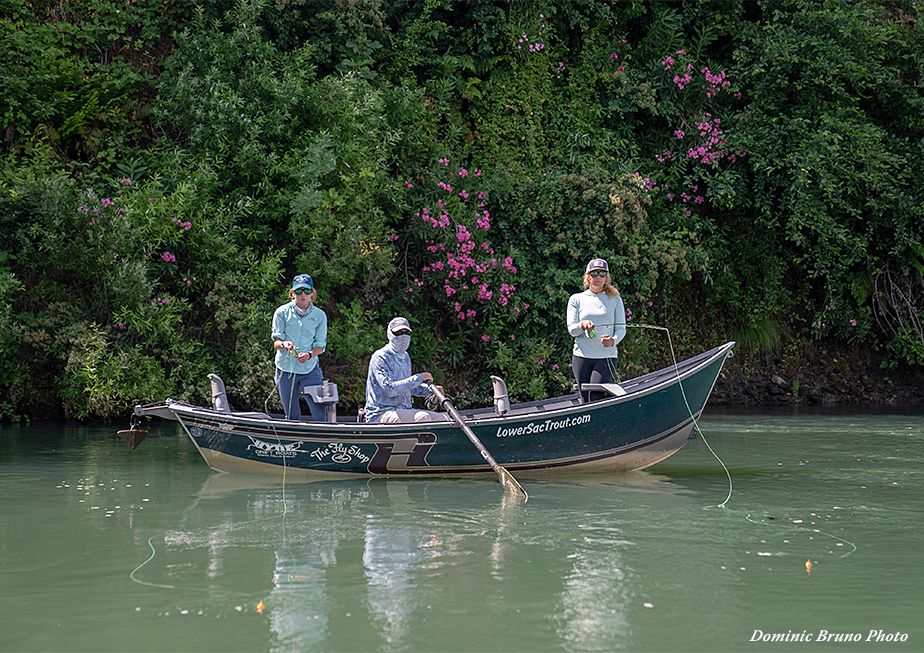
Lower Sacramento River:
Typically this river fishes best beginning some time in the late winter. Mid-February can be fantastic provided the flows are low and the water is clear. With clear skies and a warm day, we will get the first large PMD hatches popping off and these can likewise coincide with a small black Caddis hatch making for some spectacular fishing. And as we roll through March into April the fishing just gets better and better.
However, big storms and large amounts of water will fill up Shasta and they will have to make way for subsequent storms. Should we be so lucky, in this situation the Rainbow fishing can be a lot slower. Big tributaries means a lot of extra color in the river. With less sunlight bathing the riverbed we typically see delayed insect hatches under these circumstances. The best hatches and fishing will come in late April and last through May. But, this river will give up a large +20” Rainbow every day of the year, which is why it is our most popular fishery.
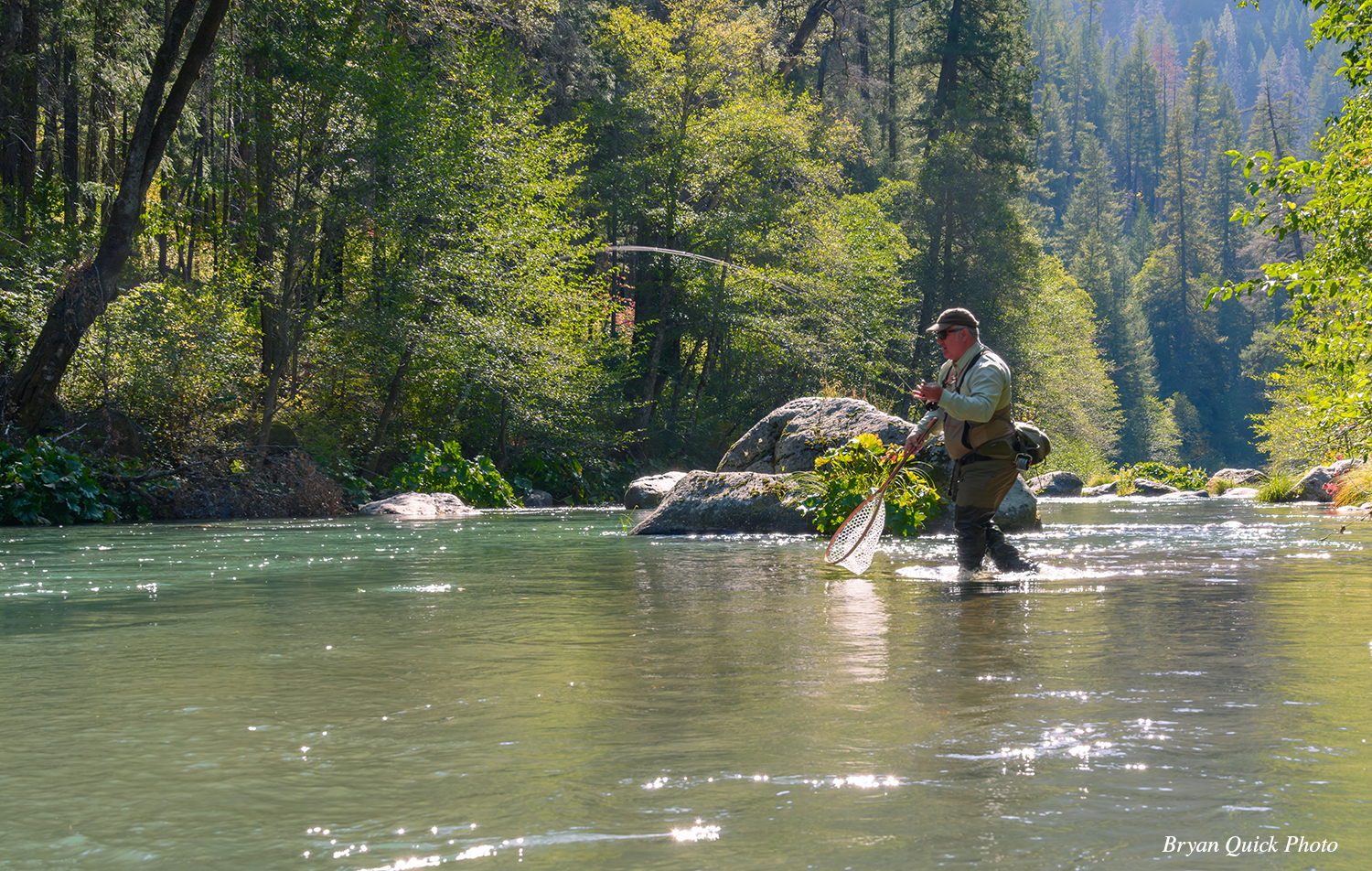
Smaller Freestones:
The big ones, the Pit, McCloud and Upper Sacramento, all benefit from a drier winter when it comes to spring fishing. These all have good populations of Salmonflies and they will begin to hatch earlier when the flows are low and clear. Prior to the year ‘round trout season, we would watch as the hatch would come and go prior to the opener. So, if we are a little light on precipitation this year, mark late March and early April on your calendar.
On the flip side, these will all see the good stonefly hatches in later May if we see a good amount of snow and rain. The flows will all likewise be higher through April, and this will tend to spread the stonefly emergence over a longer period of time. And if you catch a cloudy, rainy day in May or June, make sure you have some Green Drakes in your fly box. Other great hatches to keep in mind in this part of the season are the Pale Morning Duns, and later the Golden Stones.
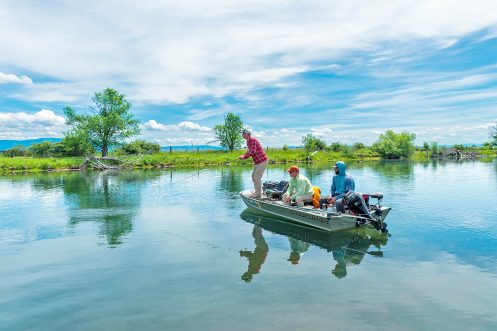
Spring Creeks:
This is where things get a little more predictable for the fly angler. For example, Fall River is primarily fed by springs and usually remains very clear regardless of the storms. And Hat Creek is likewise spring fed, however it can cloud up some when a good storm dumps in the watershed. As you guessed, the ambient temperature will have more of an effect on when these two streams wake up in the spring.
Fall River has a great population of Pale Morning Duns and this emergence is what lures early season anglers to this river. The PMD hatches in spring are the most abundant, and the insects the largest of the season, and this makes for great dry fly fishing. This hatch usually begins in earnest in mid May and continues to be a huge player through mid June. Cooler springs can push this hatch back a couple of weeks. And after spending most of the winter eating smaller insects and leeches, the fish will often key on these bugs in large pods. Fishing emergers or cripple patterns, as well as the adult imitations, during a PMD hatch on the Fall can be one of the most rewarding experiences.
 Hat Creek can be affected with higher flows and some murkier water during wet winters. This will also push the fabled Salmonfly hatch into late May – early June. The fish are still there, and when these prehistoric giants begin to come off in numbers, this is the place you want to be. A dry, warm winter will see the hatch beginning in early April and ending towards the end of the month.
Hat Creek can be affected with higher flows and some murkier water during wet winters. This will also push the fabled Salmonfly hatch into late May – early June. The fish are still there, and when these prehistoric giants begin to come off in numbers, this is the place you want to be. A dry, warm winter will see the hatch beginning in early April and ending towards the end of the month.
For both Fall River and Hat Creek, count yourself lucky if you happen to be on the water when it’s cloudy or rainy in spring. Both of these streams have good populations of Green Drakes, when they come off in good numbers the fish will feed on them almost exclusively. For the emerging insects the cripple patterns will generally work best.
The Lakes:
We have a variety of lakes up here ranging from foothill timber ponds to alpine lakes. The lower elevation lakes like Rock Creek Lake and McCumber will always begin fishing well earlier than Baum Lake or Manzanita. This will be due to runoff and ice out. Look for cloudy conditions on lakes with feeder tributaries during a wet winter. If it is a cold, wet winter you will also see lower water temperatures as the snow runoff fills the lakes. April is a good month generally for the lower elevation lakes to get a good day in, you may have to wait until late May for Manzanita to become completely ice free.
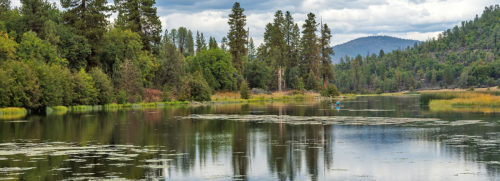
On a dry winter all bets are off. Some of the finest stillwater fishing can come in March on a sunny, still day. Fish love the warmer temps just as much as we do, and with these conditions insects will begin emerging in force as well. Be prepared with Damsel nymphs and your favorite mayfly nymph and an Intermediate line. And don’t forget to bring a bunch of Adams in assorted sizes.
The forecasters at NOAA say this winter will have average temperatures and precipitation chances, right now we’re looking out the window at rain falling and are expecting another two to three inches over the coming days. We hope this continues through the winter and we get a nice pack of snow to feed the rivers and fill our lakes. If this doesn’t happen, we will definitely be ready for an earlier start to the season!
If you are interested in learning more about these fisheries or would like to check availability for a guided trip, call or send an email to Bryan Quick or Chris King in the Outfitters Department (800) 669-3474.
